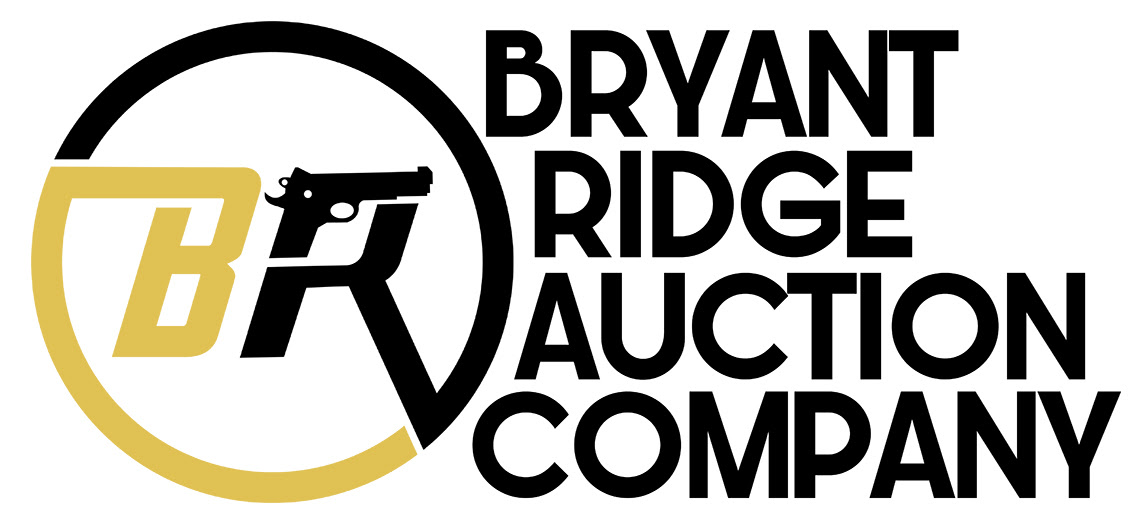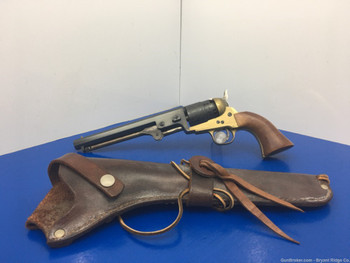Description

Item Description
Click here to view our other Live Auctions!
If you have missed out on this auction or are looking for a particular firearm, contact us. We have 100s of Collector Grade firearms (not on auction) in our inventory and available for immediate purchase.
Click here to let us know what firearms you are searching for!
Model: 1849 Pocket ".32 Rim Fire Thuer Conversion"
Serial: 4707
Date of Manufacture: 1970 (According to the "XXVI" date code)
Caliber: .31 Cal / .32 Rim Fire
Finish: Blue and White
Barrel Length: 5 3/4" half round/octagon
Optics/Sights: Gold bead front with Hammer notch rear
Stock/Grips: Smooth Walnut
Action: Single-Action / Cap & Ball / Percussion
Markings: Standard / The frame, barrel, cylinder, loading lever, hammer, trigger guard, backstrap, and butt are all engraved with stunning scroll artwork engravings.
Bryant Ridge's Analysis:
The family of Colt Pocket Percussion Revolvers evolved from the earlier commercial revolvers marketed by the Patent Arms Manufacturing Company of Paterson, N.J. The smaller versions of Colt's first revolvers are also called "Baby Patersons" by collectors and were produced first in .28 to .31 caliber and later in .36 caliber by means of rebating the frame and adding a "step" to the cylinder to increase the diameter. The .31 caliber carried over into Samuel Colt's second venture in the arms trade in the form of the "Baby Dragoon"-a small revolver developed in 1847–48. The "Baby Dragoon" was in parallel development with Colt's other revolvers, and by 1850, it had evolved into the "Colt's Revolving Pocket Pistol" that collectors now name "The Pocket Model of 1849". It is a smaller brother of the more famous "Colt's Revolving Belt Pistol of Naval Caliber" introduced the same year and commonly designated by collectors as the "1851 Navy Model". In 1855, Colt introduced another pocket percussion revolver, the Colt 1855 "Sidehammer", designed alongside engineer Elisha K. Root.
One legend has it that the pocket models were popular with Civil War officers who did not rely on them as combat arms but as defense against battlefield surgeons bent on amputating a limb; a more likely reason is that officers were not expected to directly engage in combat, except in self-defense, and the small size and light weight of the Pocket models made carrying them around more attractive than larger, heavier models (especially once the .36 caliber models came out). Richard Francis Burton was a devotee of Colt Revolvers and carried a selection of them on his Middle Eastern and African journeys including the trip to Somalia and Ethiopia in 1855. Armi San Marco was a family-owned gun maker in Brescia, Italy. They supplied American retailers with replica firearms over the 1960’s through the 1990’s.
The Thuer Conversion was and attempt by Colt to get around the Rollin White patent on revolvers with cylinders that could accept cartridges. The Thuer alteration design was somewhat complicated and unconventional but neatly evaded the Rollin White patent. The conversion loads from the front but still used center fire cartridges. The 1849 Pocket Revolver was the most widely produced of any Colt percussion pistol, with nearly 340,000 manufactured during a 23-year production run that ended in 1873. Alexander Seward patented the Thuer cartridge conversion in 1868, and it was the first cartridge conversion that was available directly from Colt. The conversion was an immediate success but expensive to produce.
Contents:
This example will ship with a wooden case, a flash, a ball mold, a .31 Caliber cylinder, five extra nipples, two nipple wrenches, a key, and a 33-round box of vintage Winchester Repeating Arms .32 Rim Fire ammo! Note: The Box of ammunition will ship separately.
Return Policy:
We gladly offer a 3 day unfired inspection policy from the time that the firearm is delivered to your FFL. Refunds are available for all qualifying orders.















